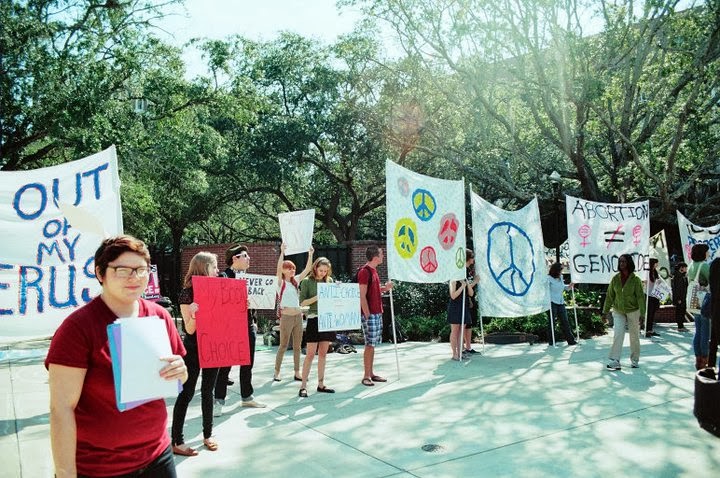In our recent white paper, To Be (A Coalition) Or Not To Be (A Coalition), Tom Novick and Michael O’Loughlin shared a ton of important advice for when you’re thinking about turning your advocacy campaign into a coalition effort. If you haven’t read it yet, be sure to check it out here.
But if you think you have what it takes to form a successful coalition – make sure you’re also considering what it takes to make it run smoothly online!
The first big question…
 The question that may have the biggest impact on your coalition’s online strategy is whether or not to have a unified, branded presence. If you’re planning to pool resources with other groups to run an ad campaign, you’re probably going to want to have a coalition website and social media presence for when activists and members of the media look you up (like JustLabelIt.org or HealthCareforAmericaNow.org). You may want people who take action on the coalition website to continue receiving emails under the banner of the campaign you’re running instead of from the individual coalition partners.
The question that may have the biggest impact on your coalition’s online strategy is whether or not to have a unified, branded presence. If you’re planning to pool resources with other groups to run an ad campaign, you’re probably going to want to have a coalition website and social media presence for when activists and members of the media look you up (like JustLabelIt.org or HealthCareforAmericaNow.org). You may want people who take action on the coalition website to continue receiving emails under the banner of the campaign you’re running instead of from the individual coalition partners.
But creating a new online presence may mean signing up for a CRM, investing in a new website, managing a new email list and maintaining Facebook and Twitter accounts – all of these things combined can cost a LOT.
That said, you don’t necessarily have to go this route. Many of the major environmental groups recently joined forces to collect and submit more than 2 million comments to the EPA in support of limiting carbon emissions. Their effort was highly coordinated, with a unified mission, message and goal – but they didn’t create a new brand to make it happen.
Talk with your coalition partners to decide on the right approach for your specific campaign and your organizations.
Now that the big one is out of the way…
Whether you decide to create a unified web presence or not, you’re going to need to set some ground rules with your coalition partners. Here are some other important points that you should consider when you’re putting together your coalition’s “constitution”:
2. How much will each group commit to? Make sure everyone is clear at the outset on what they’ll be willing to do to promote your coalition’s actions. Will each group send one email a month? One email a week? Will there be social media blitzes on specific days that everyone gets involved in? Who will be assigned to write the content – will one central staff person be producing content for all to use or will it fall to the individual groups to create their own copy (and how important is it for the messaging to be in lock step)? And remember – a stand-alone email message to a group’s full list isn’t the same as a mention in a monthly eNewsletter. Coalitions should help member groups plan ahead by being clear about when and how it will be important to have them use their online base to benefit the campaign.
3. Where will people take action? Will partner organizations send their supporters to a central website to take action or will each group have its own version of each action page? Some coalitions distribute unique links to each group so activists that take action on a central site can still be sourced back to the group that pointed them there. That takes more work on the part of the coalition staff – so if being able to track the original source is important, be sure you discuss it well before the first email blast goes out.
If growing a pooled email list is important to your campaign’s success, getting coalition members to send activists to the central site is going to be the best way to do it. But it can be a hard sell for online organizers to give up control of their activists – so whatever you decide to do, make sure all participants are in agreement on the plan before you roll it out!
4. What happens to coalition email subscribers after the campaign ends? Determine up-front how new names will be divided when your campaign is over. What will happen to names that come in through a central campaign website and can’t be attributed to a specific group’s effort? Too often we’ve seen lists end up abandoned at the end of a campaign because this decision wasn’t determined on the front end, which is a huge waste of resources!
Three common email list exit strategies we’ve seen are: Giving the names to a lead group; giving the names to a small group of key partners; or, at the end of the campaign, giving each coalition group the chance to send an email or two to the list to recruit individuals to their organization.
There is also sometimes a knee-jerk reaction for coalition groups to say that shared names won’t be used for fundraising purposes… It might be more appropriate to say: We won’t fundraise during the campaign. Be sure to think about the longer movement and capacity building when you’re making this commitment!
And whatever you decide to do – make sure your campaign’s privacy policy accommodates your list-sharing agreement.
5. What happens to social media fans & followers after the campaign ends? A social media audience can’t be divvied up between groups – but you might want to consider letting partners promote their own relevant actions to the coalition audience once the campaign has wrapped up.
6. What will happen to the campaign website? Is your coalition mission “evergreen” or will your campaign expire when you achieve your goal? You may just want to consider keeping the website up with a simple online action to take – as long as you have a plan for what to do with the people who take that action! Or if you will be scrapping the site after you’ve won (hopefully), make sure there’s a plan in place to close down shop gracefully (and that you did not set up your hosting or domain name as a recurring payment!)



